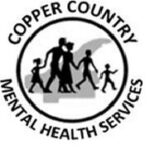Our roots in the Copper Country go back to 1963, the year Michigan passed a law empowering counties to form community mental health boards. That year, concerned citizens from Baraga, Houghton, Keweenaw, and Ontonagon counties met to discuss forming a multi-county board that would help people with mental illness and developmental disabilities live fuller lives. Private citizens worked with the county commissioners and, on December 20, 1963, the Copper Country Mental Health (CCMH) Board was formed. The board members had their first meeting on January 21, 1964 when they chose our current name.
Our first center of operations was on the Houghton Canal Road in the Rice Memorial Clinic, purchased in 1962 through the generosity of John and Mildred Rice. Staff in that building had recently moved from St. Joseph’s hospital in Hancock, where they had been providing psychiatry and therapy to children since 1956. CCMH added services to adults, and we merged with the Child Guidance Clinic Board in 1965.
One of the main focuses of our early history was follow-up with adults discharged from Newberry Regional Hospital. We recognized how critical it was for them to form a connection with another person who cared. We continued our work with children and families and coordinated with schools, courts, and other local agencies. Day Centers in White Pine and Hancock provided adults with developmental disabilities a structured day and opportunities to interact and learn skills with others. As the movement for deinstitutionalization grew, we took ownership of our first group home, Stanton House, in 1983. It was exciting to bring people from Newberry Hospital to live in homes in the community. For some, this was their first opportunity to wake up each day and decide what they wanted to eat and where they wanted to go.
Over the years we’ve grown in the services we offer, from teaching children with Autism to go shopping with their parents, to helping adults learn to manage a budget and an apartment. We help children process traumatic events and link adults with community resources. But what hasn’t changed is our commitment to helping people live in the community and enjoy life to the maximum extent they are able. Click here to view a complete list of current services.
